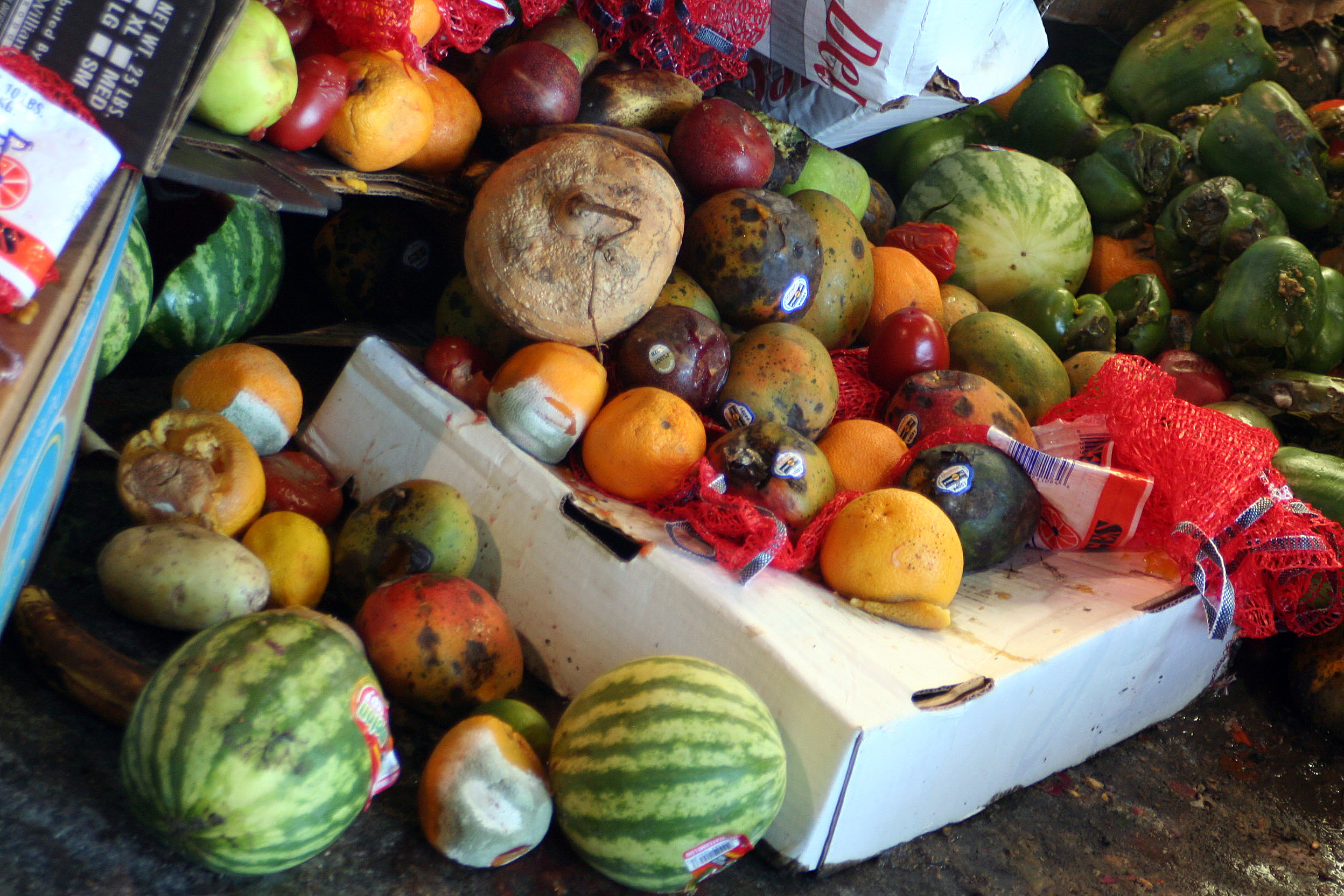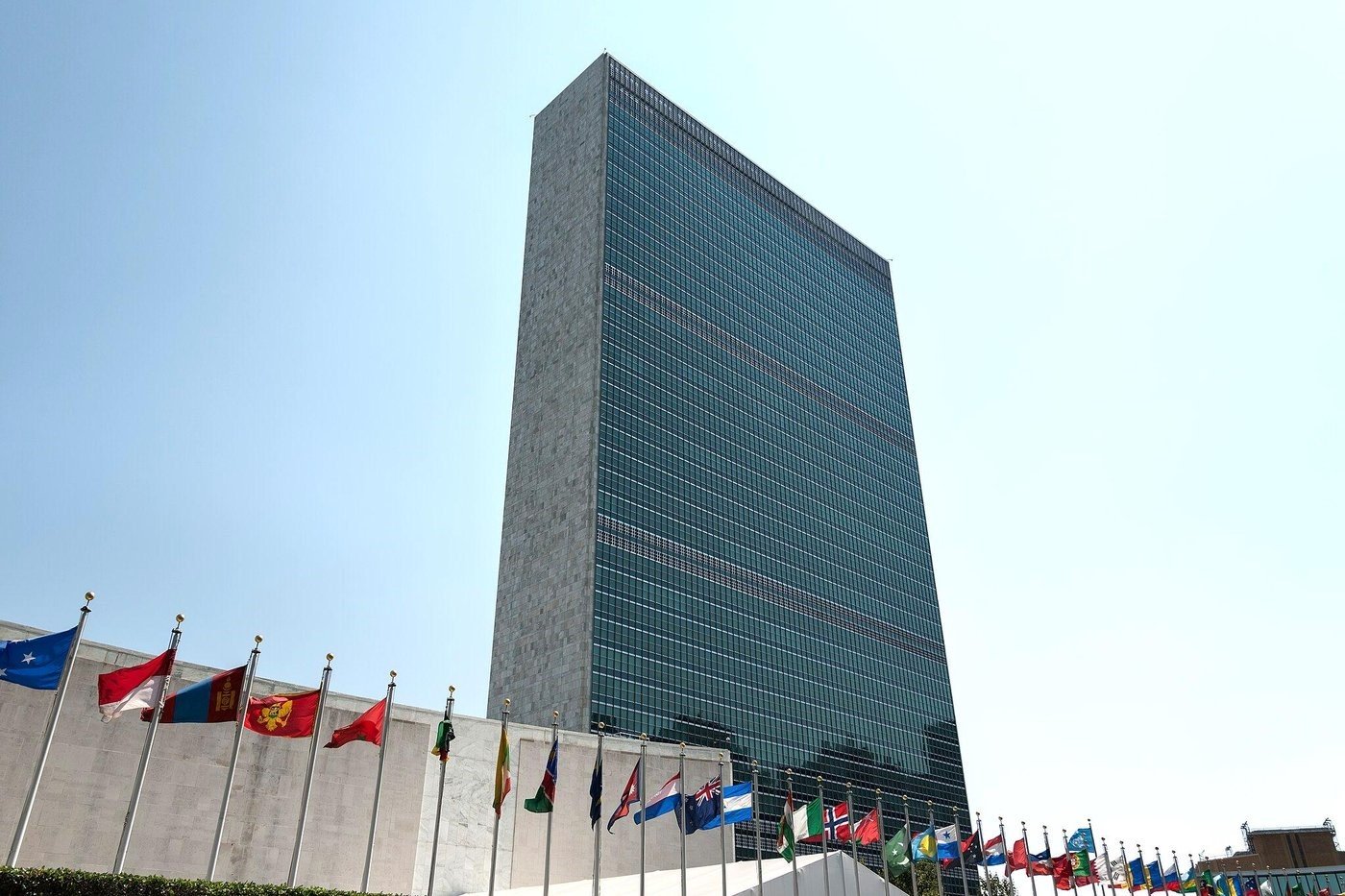A Pivotal Goal for a New Consciousness
Editor’s Note: This is the second piece in a series in collaboration with the SDSN-Y exploring the Sustainable Development Goals. See the first piece here.
If there is one goal that characterizes the shift in focus from the Millennium Development Goals to the Sustainable Development Goals, then it is probably SDG12 – Ensure sustainable consumption and production patterns.
![]()
While other goals are no less relevant, SDG12 expresses the broad vision of the new global objectives adopted by the UN’s 193 member countries on 25 September 2015, accentuating sustainable development – the title given to the MDGs’ successor framework. SDG12 is at once ambitious, integrated and universal, words recurrent in the preamble to the SDG report, Transforming our World – the 2030 Agenda for Sustainable Development.
SDG12 goes to the very heart of sustainable development. The goal speaks to developed and developing nations alike, and includes targets requiring concerted action from the public and private sector, citizens and civil society. Chiming with the inclusiveness of the post-2015 process, SDG12 challenges all the planet’s stakeholders – everyone – to play a role in building a sustainable world for future generations. Implicit – and something of a departure from the MDGs – is a change of behaviour. Acknowledgement that today we are not consuming or producing sustainably.
Central to SDG12 is the third target:
By 2030, halve per capita global food waste at the retail and consumer levels and reduce food losses along production and supply chains, including post-harvest losses.*
The FAO estimates that one third of food produced for human consumption is lost or wasted globally. That amounts to about 1.3 billion tonnes per year.
Related articles: “#SDGSTORIES – LAUNCH OF OUR SUSTAINABLE DEVELOPMENT GOALS SERIES”
“ZERO HUNGER GENERATION – THE ROAD IS PAVED”
FRIENDSHIP
Interrelationships – another key word of the 2030 Agenda – between SDG12 and the other SDGs are extensive. Reducing food loss and waste will have a direct impact on smallholder incomes and contribute to lightening financial burdens on the world’s most vulnerable people, areas covered mainly in SDGs 1 and 2.
The full global cost of food loss and waste, including environmental and social cost, amounts to about US $2.6 trillion per year (FAO, 2014). That’s 10 times more than the US$265 billion in additional investments FAO estimates is needed annually from 2016 to 2030 to end poverty and achieve zero hunger.
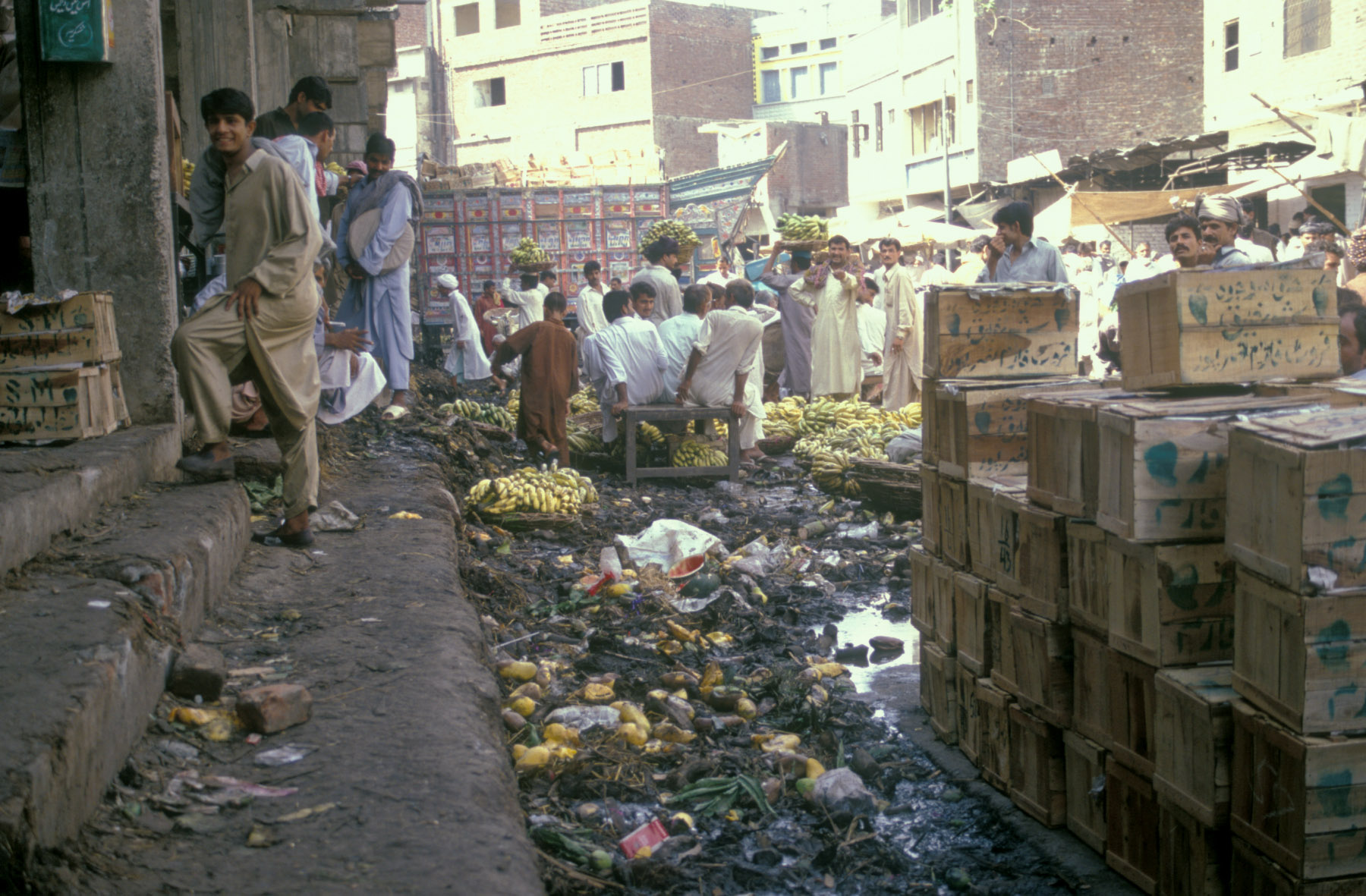 In the Photo: Central wholesale market for fruit and vegetables. Food training taking place among unsanitary conditions thus causing health hazards – Photo Credit: FAO
In the Photo: Central wholesale market for fruit and vegetables. Food training taking place among unsanitary conditions thus causing health hazards – Photo Credit: FAO
Women food producers and youth in developing countries are most likely to suffer from food losses, mainly because they have less access than other groups to technology, infrastructure, storage facilities and markets, and often face social barriers.
We fill an uncovered car with goods to sell in the market and bring back what we don’t sell. Some goods might be spoilt on our way back so we throw them away or we try to sell them again since someone might buy them for a cheaper price
– a young man from the Middle East, interviewed by FAO.
Where they are denied safe and nutritious food, people are forced to consume products of low nutritional value that have adverse effects on their health, well-being and productivity (SDG 3, health, and SDG 5, gender).
The benefits to the environment of reducing food loss and waste are areas largely covered in SDG 13, climate change, SDG 14, oceans and marine resources, and SDG 15, forests, ecosystems, biodiversity and land.
All the evidence points to the pressing need to change the way we work the land. Today, a third of farmland is degraded, up to 75 percent of crop genetic diversity has been lost and 22 percent of animal breeds are at risk. More than half of fish stocks are fully exploited, and in the first decade of this century, some 13 million hectares of forests were converted into other land uses each year.
Food loss and waste have negative environmental impacts because of the water, land, energy and other natural resources used to produce food that no one consumes. According to a FAO study, food loss and waste accounts for about 3.3 gigatonnes of greenhouse gas emissions.
To put that in perspective, if food loss and waste were its own country, it would be the world’s third-largest emitter, only exceeded by China and the United States (FAO, 2014).
Feeding the world
One of the great challenges of the next decades will be to increase global agricultural production by an estimated 60 percent by 2050 to meet projected demand for food and feed from a growing and changing world population. Admittedly, there are still almost 800 million people hungry in a planet that easily produces enough food for everyone, but preventing and reducing food loss and waste will go a long way to support food security and nutrition for all.
According to FAO, an estimated 30 percent of cereals, 40 to 50 percent of root crops, fruits and vegetables, 20 percent of oilseeds, meat and dairy products, and 35 percent of fish are lost or wasted each year. Preventing just half of this loss will have a massive impact on food availability.
However, while few would deny the multiple benefits of reducing food loss and waste, the question remains how to go about tackling a complex area that requires different approaches in different parts of the world.
In low-income countries food loss results from wide-ranging managerial and technical limitations in harvesting techniques, storage, transportation, processing, cooling facilities, infrastructure, packaging and marketing systems. In such cases, simple innovations can make a big dent: the introduction of simple elevated racks for drying fish in the Burundian coast of Lake Tanganyika has greatly reduced losses and increased the wellbeing of fish processors, the majority of which are women.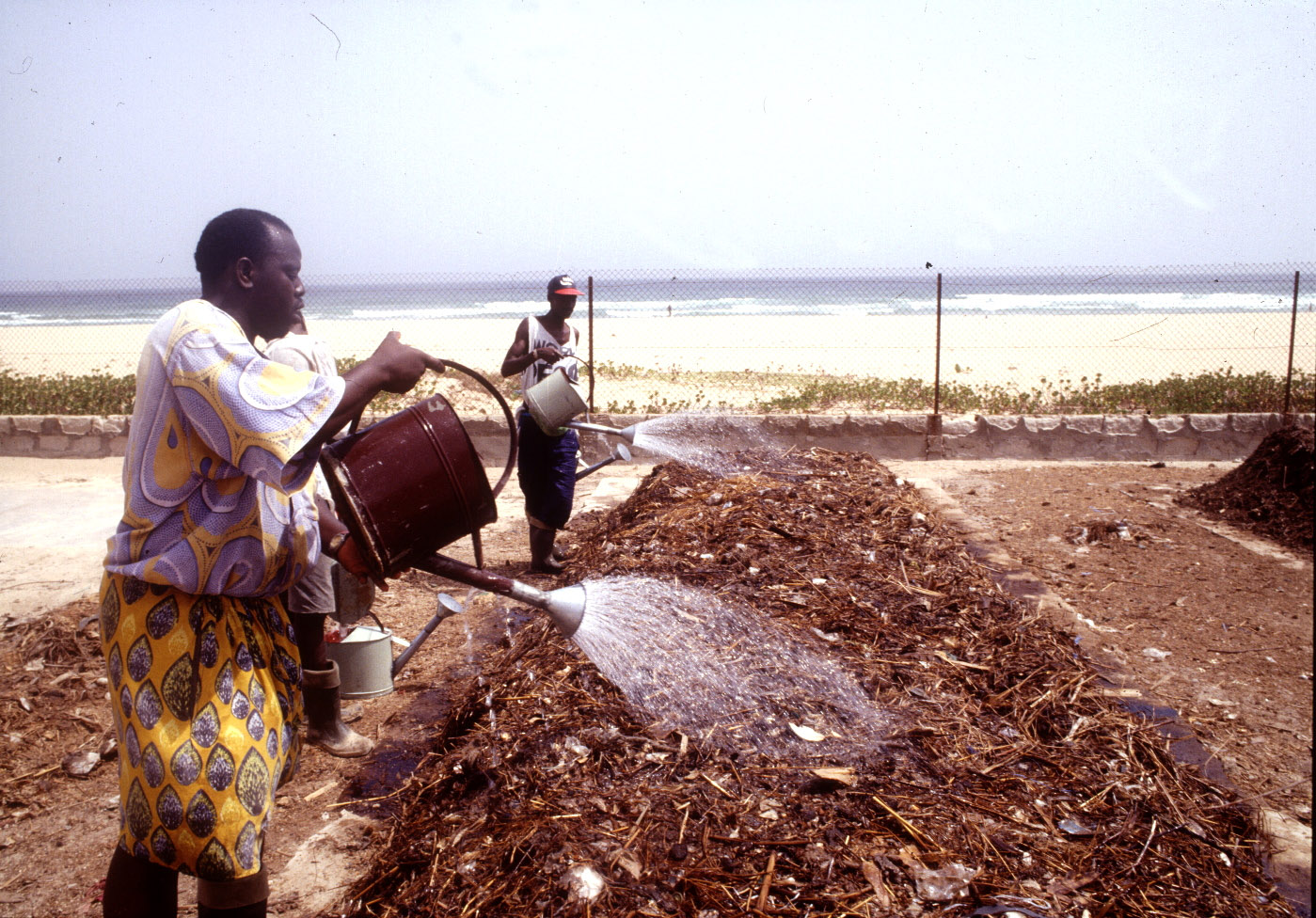
In the Photo: Preparation of compost made from discarded bits of fish (head, tail, innards) and village waste. The compost plant is run by a cooperative of young men. – – Integrated agro-silvo-pastoral project for the development of four villages: SEN/87/027. The main activity in Kayar, at the coast ca. 60 km. north of Dakar, is fishing and fish processing. The project serves to improve the operational and organizational techniques of several groups in the village. Photo Credit: FAO
Before, we incurred huge losses mainly during the rainy season because rain used to damage everything,
– Pelousi Ndayisaba, a former female combatant who had reintegrated into society as a fish processor.
The causes of food waste in medium- and high-income countries largely relate to behavior, regulations like date labels on foodstuffs, policies like agricultural subsidies – an area covered in SDG12.c and SDG17, and the capacity to build and maintain public-private-civil society partnerships.
In addition, today’s food supply chains are increasingly globalized, with certain food items produced, processed and consumed in very different parts of the world. Food commodities traded on international markets and wasted in one part of the world could affect food availability and prices in other markets.
Food systems
A comprehensive approach to reducing food loss and waste is embedded in the broader concept of promoting sustainable food systems, which encompasses sustainable food production on the one hand, and sustainable diets and consumption on the other.
Globalization, urbanization and commercialization have brought revolutionary changes to agricultural and food systems with the primary sector increasingly characterized by integrated supply chains and global agricultural markets. Agricultural and food systems are becoming more science- and capital-intensive.
While these developments have yielded some positive results, they have also made more challenging the participation of smallholder producers, women and youth, as well as some developing countries, in local, national and global markets.
We need to address food losses through value addition, proper storage and ensuring market outlets, since the product is highly perishable and you don’t have proper storage facilities, so that you can quickly sell it
-notes FAO field officer Amie Jallow Jatta.
Their participation is critical to ending poverty and hunger, and fair and efficient food systems will not only improve incomes and nutrition, but also contribute to the responsible use of natural resources and the Right to Food for all.
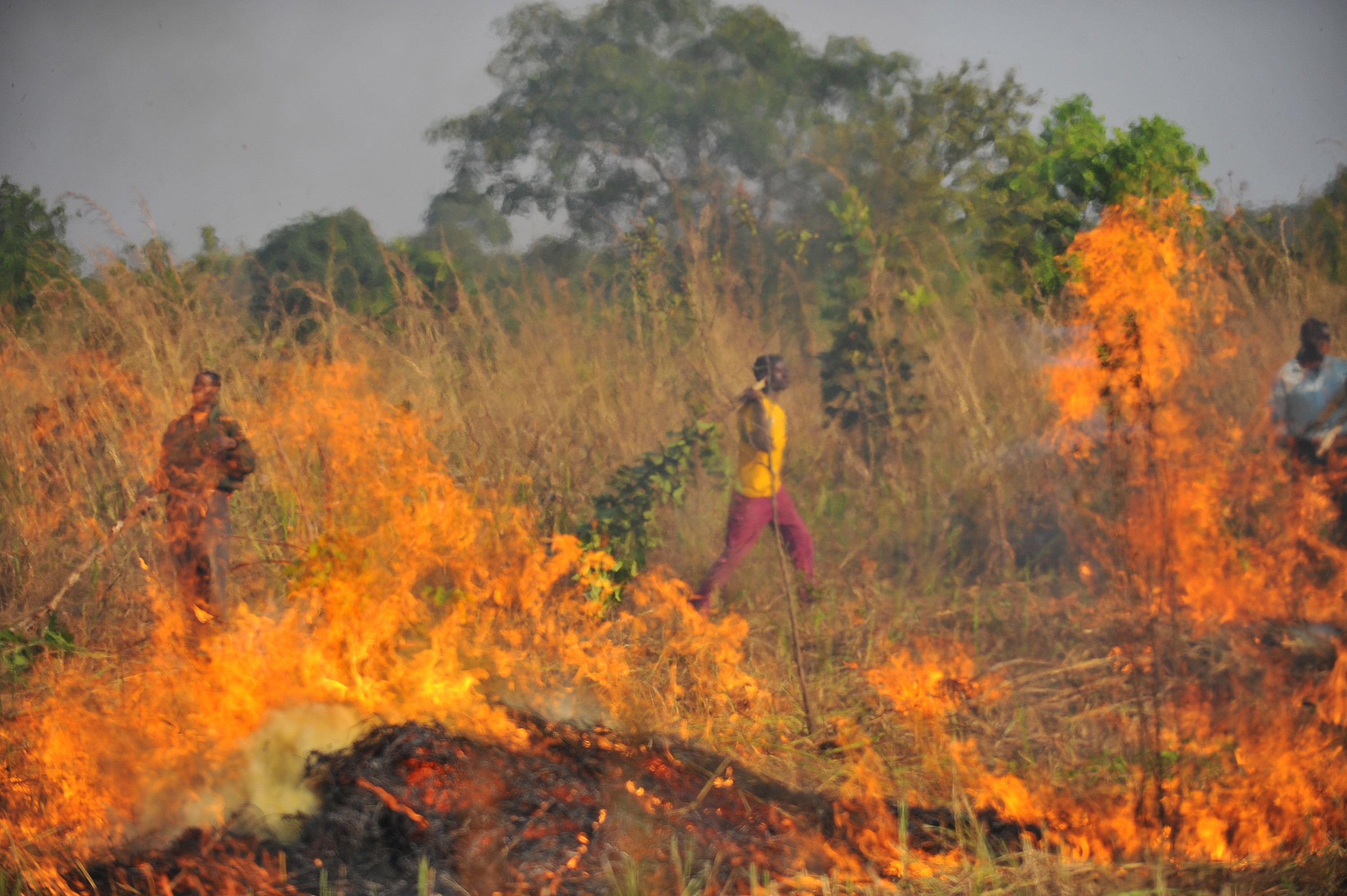 In the Photo: Kigoma, Tanzania – Villagers performing a controlled burn of tall grass. FAP Project GCP/GLO/194/MUL – Strengthening Forest Resources Management and Enhancing its Contribution to Sustainable Development, Land use and Livelihoods. August, 1, 2012 – Photo Credit: FAO
In the Photo: Kigoma, Tanzania – Villagers performing a controlled burn of tall grass. FAP Project GCP/GLO/194/MUL – Strengthening Forest Resources Management and Enhancing its Contribution to Sustainable Development, Land use and Livelihoods. August, 1, 2012 – Photo Credit: FAO
Until now, combating food loss and waste in any coordinated way at a global level has taken the form of multi-stakeholder partnerships aimed at supporting governments, informing and engaging the general public, and spreading knowledge among food chain actors from herders, farmers and fishers to global companies.
Perhaps the most prominent initiative to date is the FAO-led Global Initiative on Food Loss and Waste Reduction (SAVE FOOD), a unique partnership with government, civil society, research and the private sector, counting on more than 500 companies and organizations active in food losses and waste reduction. Its aim is to facilitate dialogue among relevant actors, drive innovation and evidence for policies and strategies, share knowledge and provide technical support to generate loss and waste solutions across the entire value chain from field to fork.
This initiative helps us be more self-sufficient. We can invest more in our farming, get better yields, and live in better conditions
-Ndey Drammer, a woman farmer in The Gambia, about an FAO project under SAVE FOOD which works with women’s associations to establish a modern food processing sector.
Related articles: “INNOVATIONS IN FOOD PRODUCTION – AN URGENT AWAKENING”
“ETHICAL TEA PARTNERSHIP – ADAPTING SMALLHOLDERS TO CLIMATE CHANGE”
FRIENDSHIP
Other notable mechanisms include the Global Community of Practice on Food Loss (FL) Reduction launched by FAO, IFAD and WFP, and the FAO-supported Food Loss and Waste Protocol and Standard.
Building on these existing partnerships, FAO, in collaboration with the International Food Policy Research Institute (IFPRI), launched on 4 December 2015 the Technical Platform on the Measurement and Reduction of Food Loss and Waste.
The new Platform, which had been a recommendation of the G20 Meeting of Ministers of Agriculture held in Istanbul in May 2015, is also composed of representatives of international organizations, bilateral institutions, NGOs and the private sector. It aims to raise awareness, improve coherence and share successful experiences and best practices within the context of sustainable food systems. Top of the new Platform’s agenda is likely to be the challenge of measuring food loss and waste, which has hampered previous attempts to act systematically in tackling the issue. Accurate estimations of the full magnitude of food loss and waste are still lacking, particularly in developing countries.
The 2030 Agenda is likely to change all that. As the focus switches to developing an indicator framework to measure the SDGs, FAO has proposed a new Global Food Loss Index which countries have accepted as the indicator for target 12.3. The indicator, which relies on primary data collected from government agencies in the Agricultural Production Questionnaire or harvested from official publications and other sources, will be calculated on an annual basis and broken down by country and commodity. It measures total losses from the time at which production of an agricultural product is recorded until it reaches the consumer as food.
Mastering the challenge of measuring sustainable consumption and production will help the world know if by 2030 it has succeeded in choosing a sustainable path.
Key to success for the whole 2030 Agenda will be engagement. By connecting and communicating the daily decisions people make to positive impacts on the planet and humanity, SDG12 stands out as real, relevant and ultimately reachable.
——-
This article is part of our series in collaboration with the Sustainable Development Solutions Network Youth Division on the Sustainable Development Goals (SDGs) – #SDGStories. Follow the stories with #SDGStories and look for the next installment to our weekly series to learn more about achieving the SDGs across the globe. We can achieve them, and we must.

* Food loss refers to all food produced for human consumption but not eaten by humans. Food loss is defined as “the decrease in quantity or quality of food”. The part of food loss that is called “food waste” refers to discarding or alternative (non-food) use of food that is safe and nutritious for human consumption along the entire food supply chain, from primary production to end consumers. Food waste is recognized as a distinct part of food loss because drivers that generate it are different from those that generate food loss. (FAO, 2014)


